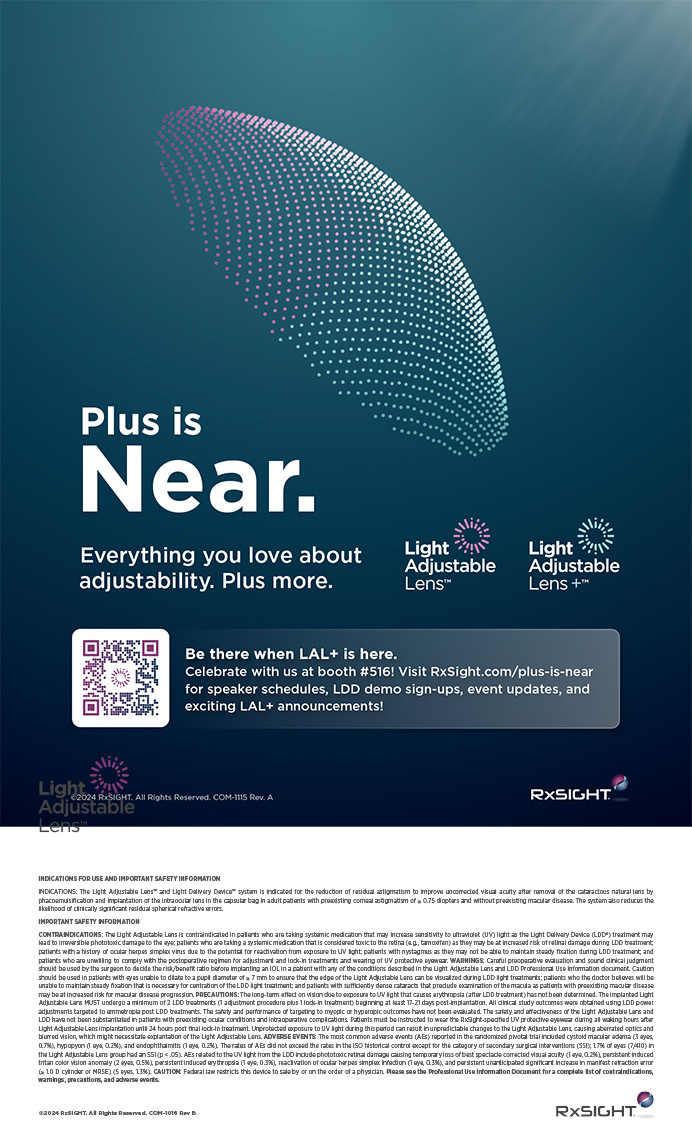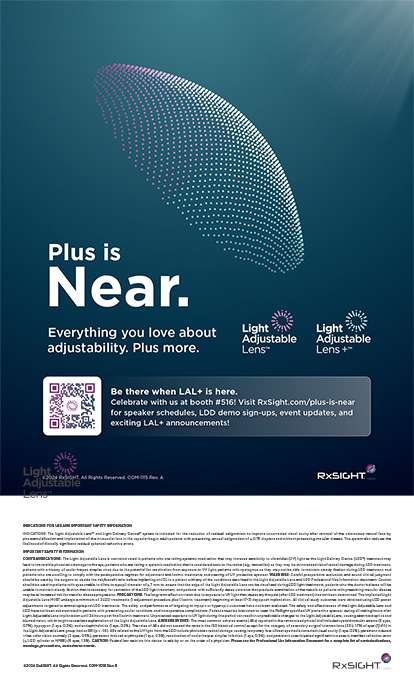Anterior segment optical coherence tomography (AS-OCT) (Visante; Carl Zeiss Meditec, Inc., Dublin, CA) has been integrated into the demands of our practice for the last 4 years. Our practice is multidisciplinary with several ophthalmology subspecialists, comprehensive ophthalmologists, optometrists, research scientists, and diagnostic technicians. The AS-OCT is primarily used by anterior segment and glaucoma subspecialists as part of their routine diagnostic testing. A technician operates the device and obtains an image in 0.125 seconds with no ocular contact, making it a comfortable and pleasant test for the patient. We find this technology valuable as a screening tool for assessing narrow angles, corneal and iris anatomy, and the IOL’s position. Repeat testing allows us to follow anterior chamber angles and anatomy.
ANTERIOR CHAMBER ANGLE ASSESSMENT
Because glaucoma patients constitute a large proportion of our referrals, angle assessments are routine in our practice. Through a clinical examination, we categorize each patient’s angles as open, questionable, borderline, or narrow/closed. In the last three cases, AS-OCT helps to document the angles and to confirm or clarify the diagnosis. In select eyes, imaging has revealed a narrow angle that we would not have detected on clinical examination alone. Because AS-OCT is performed in a dark room without corneal contact, it is not subject to artifactual opening of the angle due to pupillary dilation or compression, as can occur during traditional gonioscopy, particularly with patients who squeeze their eyelids together. For these reasons, the angle is often narrower on an AS-OCT scan than is found on clinical examination, and the former is thus likely more representative of the patient’s physiologic state.
AS-OCT objectively measures several distinct parameters such as the anterior chamber angle, angle opening distance, iris contour, and anterior chamber depth. This information allows us to detect varied and often combined mechanisms of angle-closure glaucoma, including pupillary block, lens rise (Figure 1), plateau iris (indirect signs), ciliary body cysts (pseudoplateau iris), supraciliary effusions, choroidal effusions, anterior subluxation of the lens, and malignant glaucoma. In patients who undergo laser peripheral iridotomy, we obtain AS-OCT images prior to and a few weeks after the procedure (Figure 2) to facilitate an accurate assessment of their response to the treatment. A comparison of pre- and postlaser images demonstrates flattening of the iris profile from relief of pupillary block and the resultant angle opening. However, more importantly, any residual narrowing of the angle from mechanisms other than pupillary block, such as lens rise and plateau, are revealed on the postlaser images. These findings guide further treatment and can highlight a need to revisit the clinical examination.
CORNEA
An evaluation of the cornea with AS-OCT can be helpful in refractive surgery. We also find imaging useful for general purposes in the clinic and for cataract/IOL surgery. When planning limbal relaxing incisions, a global pachymetry map (Figure 3) generated by the Visante AS-OCT can provide vital information on the peripheral corneal thickness, which guides the incisions’ depth. The pachymetry map can also highlight localized thinning and thus help to flag corneas with keratoconus and irregularities. When combined with corneal topography (we use the Humphrey Atlas [Carl Zeiss Meditec, Inc.]), the AS-OCT, in our experience, becomes an even more powerful tool for detecting subtle areas of thinning on the posterior corneal surface of the cornea (Figure 4). We are in the early stages of using the software- based integration of the Visante AS-OCT and corneal topography (Visante Omni; Carl Zeiss Meditec, Inc.) for planning cataract surgery in eyes that have undergone refractive surgery.
IOLS
We see many patients with IOL-related problems. ASOCT helps us to evaluate the position of the IOL and the extent to which it has tilted (Figure 5). Imaging peripheral to the pupil, however, can be limited by the inability of the infrared light to pass through iris pigment.
SCLERA
AS-OCT assists with planning surgical procedures involving the sclera, such as canaloplasty, by providing a measure of the superior scleral thickness. Postoperatively, we use AS-OCT to assess the opening of Schlemm’s canal as a result of canaloplasty suture tension (Figure 6). The technology can also be used to assess the placement of intrascleral devices such as collagen implants or tubes.
CONCLUSION
The AS-OCT has enhanced our diagnostic capabilities and improved our treatment and monitoring of several conditions, both common and rare. The images captured provide anatomical insights that facilitate precise diagnoses and focused treatment, which, in turn, enhance flow in the clinic for new patient consultations and follow-up visits.
Graham Belovay MD, is a research fellow in glaucoma and advanced anterior segment surgery at the University of Toronto. He acknowledged no financial interest in the products or companies mentioned herein.
Devesh Varma, MD, FRCSC, is a clinical fellow in glaucoma and advanced anterior segment surgery at the University of Toronto. He acknowledged no financial interest in the products or companies mentioned herein.
Iqbal Ike K. Ahmed, MD, FRCSC, is an assistant professor at the University of Toronto and a clinical assistant professor at the University of Utah in Salt Lake City. He is a consultant to Carl Zeiss Meditec, Inc., but acknowledged no financial interest in the products mentioned herein. Dr. Ahmed may be reached at (905) 820-3937; ike.ahmed@utoronto.ca.


